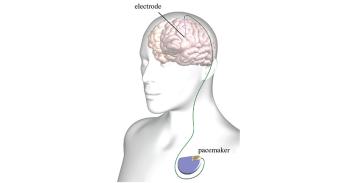The University of Cambridge has been announced as one of the centres that will form the UK Dementia Research Institute (UK DRI) alongside Cardiff University, the University of Edinburgh, Imperial College London and King’s College London.
The University of Cambridge has been announced as one of the centres that will form the UK Dementia Research Institute (UK DRI) alongside Cardiff University, the University of Edinburgh, Imperial College London and King’s College London.
Our centre on the Cambridge Biomedical Campus will focus on interdisciplinary science, building on our University’s strengths across research areas from chemistry and biophysics through to cell biology of neurodegeneration
Giovanna Mallucci
The UK DRI is a joint £250 million investment into dementia research led by the Medical Research Council (MRC) alongside founding charity partners Alzheimer’s Society and Alzheimer’s Research UK. Established in response to the Government’s 2020 Challenge on Dementia, the DRI’s mission is to find new ways to diagnose, treat and prevent and care for people with dementias, a group of neurodegenerative disorders which include Alzheimer’s, Parkinson’s and Huntington’s disease.
The selection of the UK DRI centres marks a significant investment for the institute, with total funding for the foundation programmes and resources awarded to the centres reaching £55 million, which the centres will supplement with over £20m worth of co-investment.
Bringing together world-leading expertise across the spectrum of dementia research, and maximising the benefit of cutting-edge facilities and skills, the newly announced centres join University College London (UCL) which was the first centre to be announced as the location of the DRI headquarters in December 2016, alongside the announcement of UK DRI Director, Professor Bart De Strooper.
Each centre will be led by an associate director and up to four programme leaders who will lead the centre’s foundation programmes. The centres have been awarded a total of 20 professorships and seven fellowships in the foundation phase, to build momentum in the institute. The centres have a biomedical focus, and care research will also be integrated into the institute next year.
The Cambridge centre will be led by Professor Giovanna Mallucci, who added: “We are very excited about the opportunity for Cambridge to be part of the UK DRI. Our centre on the Cambridge Biomedical Campus will focus on interdisciplinary science, building on our University’s strengths across research areas from chemistry and biophysics through to cell biology of neurodegeneration.”
Professor Bart De Strooper, Director of the UK DRI, said: “The shared vision between the centres will be at the heart of the DRI’s success, and this creativity at the borders will lead us to truly understand dementias and how they progress. We selected the centres based on innovative, excellent science, evidence of strong leadership, the alignment of goals with the DRI as a whole, and the ability to grow and collaborate as the institute gathers pace.
“An overarching theme from the University of Cambridge was the excellence of its science. Professor Mallucci’s energy and commitment to the cause was clear and I am confident she will drive successful interactions not only between her team’s programmes but with the wider DRI.”
Science Minister Jo Johnson said: “Dementia affects millions of people around the world, but through greater understanding we can make significant steps forward to improve lives.
“Today’s announcement of the institute’s centre locations demonstrates the UK’s existing wealth of knowledge and research expertise, and the leadership role we can take in developing new treatments to tackle this disease. This is exactly the type of project our Industrial Strategy will build on to ensure the UK remains at the forefront of global science.”
Following the announcement of the centres and their foundation programmes, recruitment will soon begin to establish a number of a core programmes. The institute is seeking talented researchers from around the world, from a wide variety of fields, to fill knowledge gaps in dementias and enrich expertise. Visit the UK DRI website here for more information.
Adapted from a press release by the Medical Research Council

The text in this work is licensed under a Creative Commons Attribution 4.0 International License. For image use please see separate credits above.




